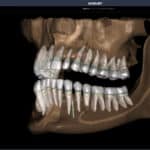A brand refresh can honor your roots while positioning your practice for the next decade of growth—here’s how to evolve without losing what patients love.
By Amy Epstein, MBA
When orthodontists think about growing their practice, they often focus on marketing channels, new technology, or additional locations. But one of the most powerful drivers of growth is something that is deceptively simple and often overlooked: your brand.
A brand isn’t merely a logo or a tagline. It tells the story about who you are, what you stand for, and why patients should choose you. But when the brand falls out of step with the patient experience or your vision, it’s time to evolve.
For orthodontic practices, brand evolution isn’t a one-time event, it’s a process of aligning perception with progress. Whether that means a full rebrand or a strategic refresh, evolving can help position your practice for future growth and strengthen connections with your community.
In orthodontics, as in every business, people buy relationships and trust as much as they do results, as author Seth Godin has long emphasized.
“People do not buy goods and services,” Godin said. “They buy relations, stories, and magic.”
Hear More: Amy Epstein talks about when to consider a practice rebrand
Recognizing When It’s Time to Evolve
Over time, even the strongest brands can drift away from effectively communicating the experience they provide. For orthodontic practices, there are clear signs when a brand is out of sync: the messaging no longer fits the level of care being delivered, the logo looks dated, or the website hasn’t been updated in years. Patients may not articulate it, but they notice the disconnect.
In an era where most potential new patients experience your practice online before ever stepping inside, that first impression matters. An outdated or inconsistent brand presence can quietly undermine credibility, especially if it doesn’t reflect the innovation and sophistication that define modern orthodontics, from digital workflows to services like remote monitoring, clear aligner therapy, and custom braces.
The goal of evolving the brand is to reconnect perception with reality. It doesn’t erase your history; it brings it forward in time. That can mean rebuilding messaging to better represent your team and values. Or if the messaging is still on point, it could just be aligning the online user experience with your onsite one by redesigning your website. And in some cases, it means something bigger like redefining the name and identity of the practice itself.
Refresh vs. Rebrand: Choosing the Right Path Forward
Not every brand evolution requires a clean slate. A refresh makes sense when the foundation of your brand is still strong, but your visuals or messaging need modernization. Maybe your patient mix has changed, your services have expanded, or your logo still features braces even though your practice now focuses heavily on clear aligners.
A rebrand, on the other hand, goes deeper. It’s often prompted by a significant business change such as a retiring doctor, a new partnership, an acquisition, or a shift in the markets you serve. In those cases, the goal isn’t just aesthetic. It’s about realigning your story, honoring what’s familiar while introducing what’s next but still retaining the brand equity you’ve built.
The most successful transitions balance continuity with progress. Patients want to know that the care they value remains unchanged. They can embrace a new name, logo, or look, but only after they’re reassured that the people, quality, and experience they trust are still behind it. Before unveiling something new, make sure you’ve communicated what’s staying the same. Branding and communication go hand-in-hand.
When in doubt, certain moments in a practice’s lifecycle should always trigger a conversation with a branding or marketing expert. These include an upcoming ownership transition, a move or expansion into a new location, a shift in patient demographics such as a growing adult or aligner base, or the addition of new technology that changes how care is delivered. A professional brand evaluation might also be in order when patient flow or referrals begin to decline despite consistent clinical quality. Each of these scenarios signals that perception may no longer match reality. An outside perspective can help you realign your story before small gaps become bigger challenges.
Why Your Brand Matters More Than You Think
Orthodontics is a relationship-based specialty. Trust, confidence, and reputation drive referrals and word-of-mouth growth. When your brand doesn’t reflect the level of care you deliver, it creates dissonance, especially for new patients discovering you online.
A dated or inconsistent brand can give the impression that a practice is standing still in an industry that’s (very) rapidly advancing. A refreshed or reimagined brand signals momentum and investment in the future. It tells your community that you’re growing, improving, and here for the long term.
It also energizes your internal culture. Teams take pride in a modern, cohesive brand that reflects who they are today. When everyone sees themselves represented on the website, in social posts, and in the design of the space, it reinforces purpose and unity.
As advertising icon David Ogilvy once said, “A brand is the intangible sum of a product’s attributes.” Meaning, a brand is not just what it looks like, but also how it makes people feel.
Insight First, Identity Second
The best rebrands don’t start with design, they start with discovery. Before changing colors or dreaming up logos, take a step back to understand three things: what you do well that you can consistently deliver to patients, what patients actually value, and what the competition is saying about themselves. By triangulating these factors you can surface your practice’s unique value proposition so that your messaging is distinctive from the competition. Every orthodontist creates beautiful smiles. How can you distinguish your practice to help patients choose you?
Start with identifying your core competency. All strong branding is based on promises that are delivered. Connecting expectation with experience. Talk to your team and identify what you can promise and confidently and consistently deliver to patients, referring providers, and the community.
Second, look at what patients value. Bernadette Jiwa, an expert in the role of story in business, reminds us that great branding isn’t about self-promotion, it’s about showing patients what you make possible for them. “The story you tell is not about you,” says Jiwa. “It’s about what you make possible for others.” Ask patients why they chose you and evaluate reviews to see what comes up the most.
Last, compare what you’ve learned against the competition’s brand messaging to identify a distinctive role your practice plays in the communities you serve.
Your unique value proposition becomes the foundation of your new narrative, the story your brand will communicate moving forward that clearly communicates why patients should choose you. From there, you can develop visuals and fleshed out messaging that express that story clearly and consistently. Color, typography, imagery, and tone are not arbitrary. They all communicate personality. A practice centered on family and warmth will present itself differently from one emphasizing technology and precision. The goal isn’t to look and sound like every other modern office. The goal is to look and sound like you.
A Real-World Example: Ultra Smiles
When a well-established orthodontic practice changed ownership after more than 30 years, the new doctor wanted to honor its legacy while working toward attracting new market segments. The original brand, named after the founding doctor, no longer reflected the practice’s direction, the high level of service they provided, or its updated technology focus.
Working closely with both doctors, our team guided a complete rebrand. The new name, Ultra Smiles, conveyed their shared philosophy of delivering exceptional care and exceeding expectations at every step.
Rather than unveiling everything overnight, the transition was staged carefully. First came communication with patients about the upcoming addition of a new doctor, emphasizing continuity of team and care, and an endorsement to transfer trust. Then came the new identity: a sophisticated logo, refreshed website, and social campaign introducing the next generation of leadership and what it means for patients.
The outcome was seamless. Patients recognized the familiar faces they trusted, while the new brand communicated the quality of the care being provided to appeal to new markets.
Naming for Growth
Names are personal, especially in orthodontics. Many practices still carry the founder’s name, which can be a source of pride and recognition. But as the business evolves, adding associates, expanding locations, or preparing for eventual succession, a doctor-based name can sometimes be limiting.
That’s why more practices are moving toward place-based or promise-based names. A location-based name, such as Hyde Park Orthodontics, roots the practice in its community. A promise-based name, such as Ultra Smiles or Signature Orthodontics, conveys values and results rather than individuals.
These kinds of names allow for flexibility over time. They can accommodate new partners, additional offices, or future ownership transitions without requiring another rebrand down the line. They also simplify marketing logistics, making domain names, Google listings, signage, and social handles easier to manage under one identity.
Protecting Trust During Change
No matter how beautiful a new brand looks, the true test is how well it is received. The key is communication that is clear, frequent, and holistic.
Patients want to know what’s happening, why it’s happening, and how it affects them. A well-planned rollout answers those questions before they’re asked, in many different media, and with frequency. Email and text campaigns, in-office signage, social media posts, and strategic advertising should emphasize continuity: the same quality of care with and a renewed commitment or focus.
Your referring providers need similar reassurance. Personal outreach through letters, lunch meetings, or short update calls helps preserve referral volume during the transition, also providing an opportunity to strengthen professional relationships.
When communication leads, trust follows. Patients then view the new brand not as a departure but as a sign of evolution and progress in which they have a part.
Measuring Success
A successful rebrand creates both qualitative and quantitative changes. It strengthens the way patients and referrers perceive the practice, and should enable measurable gains in performance metrics as well. Practices often see higher website engagement, stronger social interaction, and increased consult requests, especially if the effort is supported by social media and advertising. It also reinforces internal alignment, creating a clearer sense of direction that supports team retention.
Regular 30-, 60-, and 90-day check-ins help maintain momentum. Small adjustments, like updating FAQ pages or adding community photos, can strengthen the new brand even further once it’s in-market.
A Living System
A brand is not a static design file on a computer, it’s a living system that reflects who you are and where you’re headed. Over time, practices evolve. Teams grow, technology advances, and patient expectations change. A strong brand grows with them. It’s how an orthodontic practice demonstrates its commitment to progress, not just clinically but culturally and visually.
Reflecting that evolution doesn’t have to be disruptive. Done thoughtfully, it can feel seamless and inspiring. It’s also an opportunity to reintroduce yourself to your community with clarity and confidence. And when your brand reflects the excellence of your care, every interaction becomes stronger. Most importantly, you build something sustainable, a brand that can grow with you.
Every practice should periodically assess how its story, visuals, and patient experience align, and how a thoughtful refresh or rebrand can propel the practice forward without losing connection. Michael Eisner once said, “A brand is a living entity—and it is enriched or undermined cumulatively over time, the product of a thousand small gestures.”
Those gestures, the in-office experience, your messaging, the logo, and your digital presence, shape how your community sees you. Make sure they align with one another and with where your practice is today, not where it used to be. OP
Photo: peopleimages.com | Shutterstock.com

Amy Epstein, MBA, is the co-founder of People + Practice, an orthodontic marketing agency on a mission to unveil opportunities for orthodontic practices to thrive by implementing digital marketing strategies, technology, and services that fuel practice growth. She is also the co-host of The Golden Age of Orthodontics podcast, dedicated to highlighting the most innovative technologies and approaches in the orthodontic industry. To schedule a complimentary consultation with her or to learn more about People + Practice, visit pplpractice.com.
Other articles from Amy Epstein:
- Your Orthodontic Products Won’t Win Patients, Your Messaging Does
- From SEO to AI: The Next Evolution of Orthodontic Marketing










